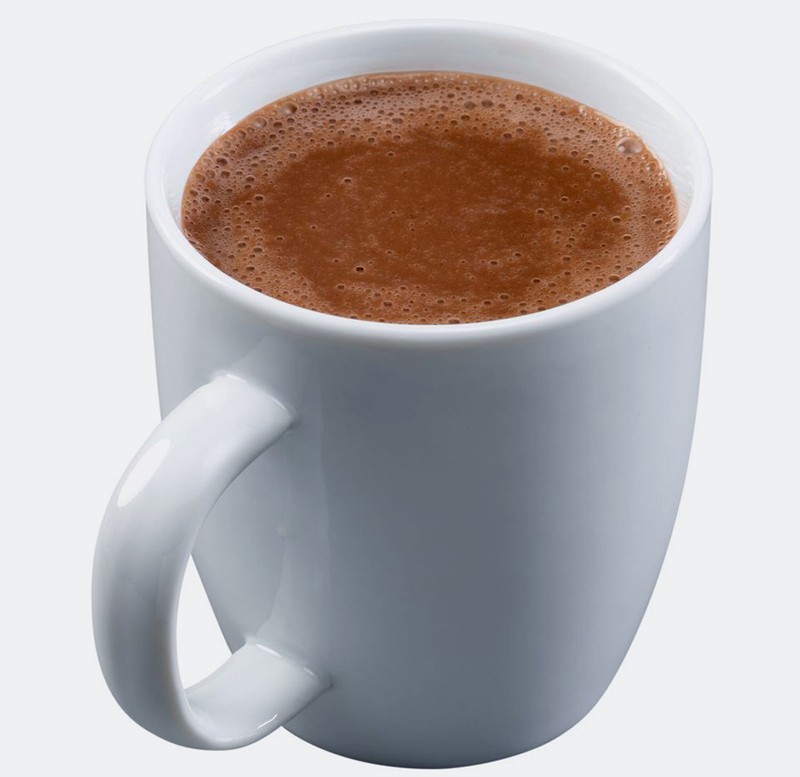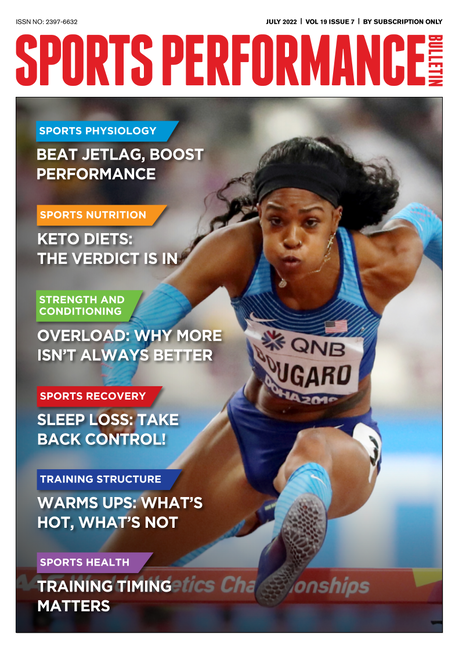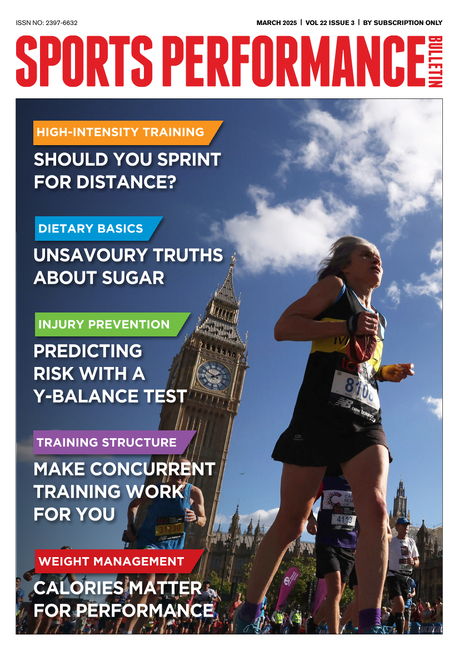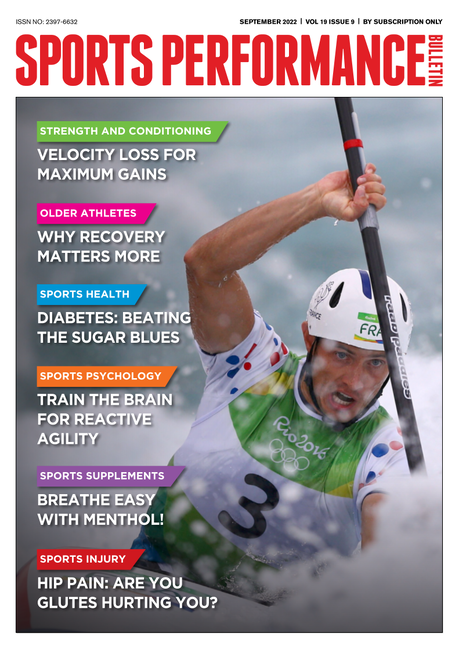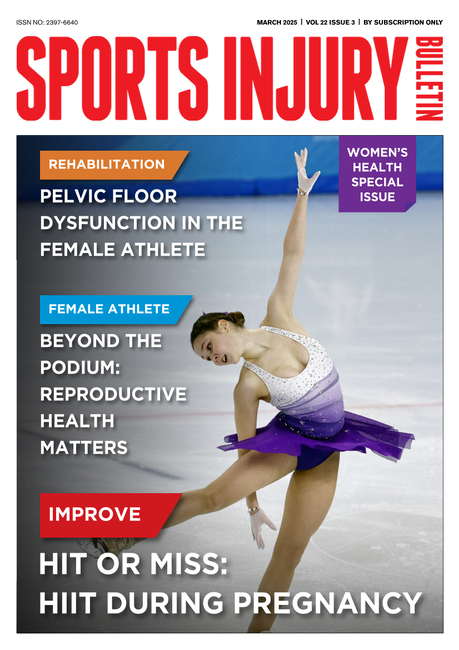You are viewing 1 of your 1 free articles. For unlimited access take a risk-free trial
Endurance health: the power of cocoa!
SPB looks at some fascinating new research on dark chocolate ingestion, and its positive effects on health and endurance performance
Around the turn of the century, scientists began to take a keen interest in the potential health benefits of cocoa products such as dark chocolate (defined as containing 70% or more cocoa solids) and cocoa beverages. This was because they had identified that the humble cocoa bean is a very rich source of source of polyphenol and flavanol antioxidants, which are known in other foods to help reduce the incidence of various degenerative diseases, especially cardiovascular disease(1). In particular, it emerged consuming higher levels of flavanols in cocoa products seemed to result in lower (and healthier) blood pressure levels(2). These findings were also supported by real world observations in communities known to consume large quantities of flavanol-rich cocoa, and where cardiovascular disease is almost absent(3).
Cocoa, dark chocolate & longevity
As research has progressed, the benefits of cocoa products have now been observed more widely across different populations. In a 2022 study on cocoa consumption and health/mortality, researchers found a highly protective effect from cocoa(4). Many of the cardiovascular benefits (and potential performance benefits) arising from cocoa product consumption are believed to occur via improved blood flow - particularly through the micro-capillaries of muscle tissue - thanks to the flavanols present(5-8). Cocoa flavanols achieve this by stimulating an enzyme call ‘NO synthase’, which leads to high levels of nitric oxide (NO) synthesis. NO is a powerful blood vessel relaxant, enabling blood vessels to dilate (vasodilation), resulting in improved blood flow and reduced blood pressure.
In an SPB article last year, we looked at research on how already healthy sportsmen and women might experience further health gains from consuming dark chocolate. In summary, this research on soccer players showed that consuming 30 grams of dark chocolate per day produced the following benefits(9):
· A decrease in total blood cholesterol.
· A drop in LDL cholesterol (the kind associated with increased risk of cardiovascular disease) of 18.5mg/dl and an increase in ‘cardio protective’ HDL cholesterol of 3.3mg/dl.
· A drop in blood triglycerides of 6.3mg/dl (high blood triglycerides are associated with increased cardiovascular risk).
· A very large and positive impact on a key determinant of omega-3 index – the arachidonic to eicosapentaenoic acid (AA:EPA) ratio.
· A more stable gut flora balance throughout the 30-day intervention, with fewer fluctuations than were seen in the control group (indicating more robust gut health).
Endurance athletes and dark chocolate
Endurance capacity is directly related to the ability of the circulatory and vascular systems to support prolonged physical activity such as running(10). In addition, recent research has established that cocoa/dark chocolate can reduce ‘arterial stiffness’(11). The arteries are the large vessels that deliver oxygenated blood all around the body.
Healthy young arteries have elastic properties, which helps accommodate and reduce the blood pressure peaks produced by each heartbeat. As arteries age and as a result of poor diet and lifestyle, arteries tend to stiffen as the years pass by. The stiffer and harder the blood vessel walls, the more the heart has to work to pump blood into the arteries; in those with stiffer arterial walls only a small fraction of each cardiac stroke volume can be utilized for blood circulation without increasing the blood pressure.
Given that we now know cocoa/dark chocolate can not only enhance vascular function, but also lower arterial stiffness – both of which are key factors during endurance exercise - can consumption of these products enhance endurance performance in athletes such as runners? To date, there’s been very research into this topic but new research by a team of Greek researchers has attempted to find some answers.
New research
Published in the journal ‘Sports’, this study recruited amateur, recreational runners from running clubs in various regions across Greece to participate(12). The inclusion criteria included that the runners had to be healthy, amateur male runners, aged 25–55 years, with a training frequency of at least three times per week. The age range was chosen because it represents the typical age group of amateur endurance runners, which was the target population of this study. Applicants were excluded however if they already consumed a diet rich in flavanols, because the consumption of additional flavanol-rich foods such as tea and apples, may have obscured the effects attributed to dark chocolate.
What they did
A total of 46 amateur runners were recruited and completed the study. In the first phase of the study, the runners underwent clinical testing for the following. This included:
· Various measures of arterial stiffness.
· Central and brachial (taken from the arm) measures of blood pressure using specialist medical equipment (Complior Analyse), which has been validated for clinical use in previous studies(13).
· A graded exercise test on the treadmill to measure sub-maximal and maximal (VO2max) aerobic performance.
The intervention consisted of consuming 50 grams of 70% cocoa solid dark chocolate consumed daily for two weeks. To ensure the intervention was rigorous and unbiased, all the participants were provided with dietary and training guidelines. Specifically, they were required to:
· Abstain from alcohol and to avoid consuming any other supplements and ergogenic aids during the intervention period.
· Not to take anti-inflammatory medications
· Not to regularly consume foods rich in nitrates (eg beetroot) and flavonoids (eg green tea, onions, apples, and wine). However, they could continue to eat other fruits and vegetables.
· Not to consume additional types of chocolate
· To replace a daily snack with the designated 50 grams of dark chocolate to prevent excessive calorie intake, which could lead to weight gain.
· Maintain their normal diet and training routine.
After the two-week intervention period with dark chocolate consumption, the baseline measurements outlined above were repeated and compared with the initial findings.
What they discovered
The results following the two weeks of dark chocolate consumption showed improvement in the runners’ vascular health. A marker of arterial stiffness known as ‘pulse wave velocity’ decreased by 11.82%, indicating more elasticity in the arteries (see figure 1). This was accompanied by improvements in blood pressure; systolic brachial blood pressure reduced by 2.12%, diastolic by 2.79%, and average pressure by 2.41%. Central arterial pressure also decreased, with systolic reducing by 1.24%, diastolic by 2.80%, and average central pressure by 2.43%.
When it came to performance in the graded exercise test on the treadmill, there were also improvements. Exercise time to exhaustion increased by 2.16%, maximum heart rates achieved by 1.15%, and maximum oxygen uptake (VO2max) by 2.31%. Moreover, there were improvements in the anaerobic threshold, which was delayed in onset time as the exercise intensity increased by 6.91% (indicating more oxygen was available to the working muscles as the anaerobic threshold approached). Likewise, it took longer to reach VO2max at the top end of exercise intensity.
Figure 1: Measures of arterial stiffness pre and post dark chocolate intervention

Practical implications
The eagle-eyed among you will notice that there was no control group in this study (ie continued training but consumed no dark chocolate). However, while this would have been desirable, a statistical analysis showed that the positive findings from the dark chocolate intervention were robust – ie very statistically significant, helped no doubt by the relatively large number of participants in the study. Moreover, these vascular and blood pressure benefits were seen despite the runners having overall already good levels of arterial stiffness, which the researchers put down to their long-term exercise habits (known to help reduce arterial stiffness)(14).
More intriguingly perhaps, this is one of the very first studies to show that improvements in vascular function due to dark chocolate ingestion can translate into exercise performance improvements. Of particular note is that during the graded exercise test, the onset of lactate threshold occurred later (ie at a higher intensity) following the chocolate intervention. This is a key parameter for performance and something that most endurance athletes train for by carrying out high-intensity training sessions such as intervals!
These findings suggest that for athletes who enjoy the taste of dark chocolate, consuming it as part of your diet has significant health and performance benefits, with virtually no downsides (apart from the need to reduce the intake of other snacks slightly to compensate for the extra chocolate calories). As a nutritional strategy therefore, the addition of 70% or more coca solid dark chocolate in your diet is easy to recommend! Below are a few tips to help you do this in the correct way:
· Use dark chocolate containing 70% or more cocoa solids – These types of chocolate contain high levels of polyphenols and flavanols due to their high cocoa solid content and relatively low levels of sugar (a good thing).
· Avoid milk chocolate –it contains added milk and quite a bit more sugar than dark. Although milk chocolate contains some flavanols, the levels are much lower than in high-cocoa solid dark chocolate - explaining why those looking for health and performance benefits should always choose dark chocolate over milk.
· Cocoa content - If you’re already a dark chocolate fan, consume around 30-50g or so per day – that’s 3-5 squares of a typical 100g bar). As mentioned above, 70% or more cocoa solid chocolate is recommended and 85% is even better as there’s even more cocoa and less sugar. More than this however (ie 90% and above) and the chocolate starts to become quite bitter and far less palatable.
· Sweetness - If you’re a milk chocolate fan, you’ll be used to much higher levels of sweetness. To start with, try consuming some 50% cocoa solid dark chocolate and once your taste buds adapt, try moving up to 60% then 70%.
· Drinks – cocoa can also be consumed as a drink to top up your flavanol intake. But make it with pure (preferably organic) cocoa powder mixed with a little sugar and some milk to taste. Do not use premixed hot chocolate powders, which contain only small amounts of cocoa and lots of sugar!
References
1. Biosci Biotechnol Biochem. 2000 Dec;64(12):2581-7
2. J. Cardiovasc. Pharmacol. 2009;54:483–490
3. J. Am. Soc. Hypertens. 2009;3:105–112
4. Eur J Epidemiol. 2022 Apr;37(4):321-333
5. Nitric Oxide. 2019 Apr 1; 85():44-52
6. Med Sci Sports Exerc. 2014 Dec; 46(12):2326-34
7. J Strength Cond Res. 2016 Dec; 30(12):3520-3524
8. J Appl Physiol (1985). 2010 Jul; 109(1):135-48
9. Int J Sport Nutr Exerc Metab. 2024 Aug 7:1-13
10. J. Int. Soc. Sports Nutr. 2021;18:55
11. Crit. Rev. Food Sci. Nutr. 2021;61:357–379
12. Sports (Basel). 2024 Dec 13;12(12):344. doi: 10.3390/sports12120344
13. Blood Press. Monit. 2018;23:164–170
14. Am. J. Hypertens. 2011;24:200–208
Newsletter Sign Up
Testimonials
Dr. Alexandra Fandetti-Robin, Back & Body Chiropractic
Elspeth Cowell MSCh DpodM SRCh HCPC reg
William Hunter, Nuffield Health
Newsletter Sign Up
Coaches Testimonials
Dr. Alexandra Fandetti-Robin, Back & Body Chiropractic
Elspeth Cowell MSCh DpodM SRCh HCPC reg
William Hunter, Nuffield Health
Keep up with latest sports science research and apply it to maximize performance
Today you have the chance to join a group of athletes, and sports coaches/trainers who all have something special in common...
They use the latest research to improve performance for themselves and their clients - both athletes and sports teams - with help from global specialists in the fields of sports science, sports medicine and sports psychology.
They do this by reading Sports Performance Bulletin, an easy-to-digest but serious-minded journal dedicated to high performance sports. SPB offers a wealth of information and insight into the latest research, in an easily-accessible and understood format, along with a wealth of practical recommendations.
*includes 3 coaching manuals
Get Inspired
All the latest techniques and approaches
Sports Performance Bulletin helps dedicated endurance athletes improve their performance. Sense-checking the latest sports science research, and sourcing evidence and case studies to support findings, Sports Performance Bulletin turns proven insights into easily digestible practical advice. Supporting athletes, coaches and professionals who wish to ensure their guidance and programmes are kept right up to date and based on credible science.

